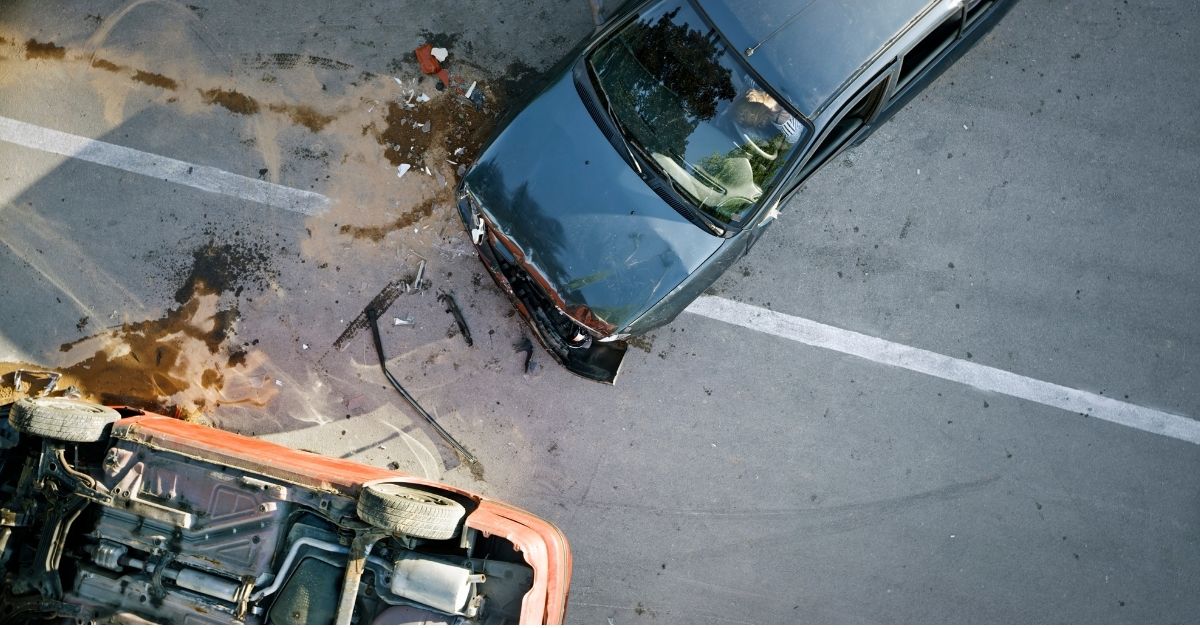The state of Texas is not a no-fault location. Texas, on the other hand, maintains a classic fault-based recovery system, commonly known as a tort liability system.
This means that in the event of an accident in Texas, the not-at-fault party has three options for recovering damages for their injuries and costs:
They can file a claim under their own insurance (such as PIP or Med-Pay coverage); they can file a claim against the at-fault motorist’s insurance company; or they can pursue a lawsuit directly against the at-fault driver.
A driver that causes an accident will be accountable for the damages that ensue, according to Texas fault laws and responsibility.
Overview
There are two types of states when it comes to vehicle accident insurance claims: at-fault and no-fault. It’s crucial to know what kind of state you live in since it can affect how you seek compensation for injuries sustained in a car accident.
Some jurisdictions require drivers to file a claim with their own insurance company, while others require drivers to file an insurance claim with someone else’s insurance company.
Texas is not a no-fault state, with the exception of divorce cases, which are another beast altogether. Texas is a tort (or at-fault) state. This is a classic legal system framework in which the individual who causes an accident is liable for the damages suffered by the other party in the collision.
Is Texas Considered a “No-Fault” State: What Does It Mean to Live in a “No-Fault” State?
A no-fault state, in contrast to fault states, forces each party to bear its own costs. Personal injury protection (PIP) is essential for all citizens.
If two people get into an accident, for example, their own insurance companies will be liable for paying for the losses.
While PIP coverage only covers personal injuries to the client of each insurance company, collision coverage can be purchased to cover any property damage.
In a no-fault state, each driver involved in a collision will seek compensation from their own insurance carrier after the accident, regardless of who was at fault.
The state preserves “no-fault” insurance in this way; both drivers have a claim for compensation, even if they caused the accident.
One of the key advantages of this kind of insurance scheme is that drivers who contributed to the incident are not eligible for compensation.
It also aids in the avoidance of high-priced litigation. One of the most significant disadvantages is that aggrieved parties can only collect specific kinds of damages.
For example, under no-fault rules, you can’t sue your own insurance company for pain and suffering until your medical expenditures exceed a specific threshold or your injury is deemed sufficiently significant, depending on the state’s statutory threshold.
Is Texas Considered a “No-Fault” State: No-Fault States vs. At-Fault States
In a no-fault state, victims file damage claims with their own insurance companies. To be compensated, no one needs to prove or determine blame. No-fault laws, on the other hand, limit your ability to sue the party responsible for your accident.
Personal injury protection (or PIP) insurance is required in most no-fault states. This is the type of insurance coverage that permits a person to seek reimbursement from their own insurance company after an accident. Following a collision, injured drivers can sue the at-fault party for almost any form of loss (injuries, emotional distress, lost wages, etc.) In no-fault states, tort insurance is often cheaper.
Is Texas Considered a “No-Fault” State?
Texas is one of the 38 at-fault states, which means that whoever is found to be at blame for the accident must compensate the injured party for the amount for which he or she is responsible. While the term “fault state” may conjure up images of a courtroom, the system’s implementation has little to do with one. In reality, a state’s position as a “fault state” has a greater impact on insurance firms’ responsibilities.
Payment is usually made through insurance companies, with each state requiring a certain level of coverage under a financial responsibility statute. In an at-fault state, personal damages such as medical expenses and missed earnings, as well as property damages such as auto repairs, are covered by the at-fault driver’s insurance.
Read Also: SLIP AND FALL LAWYER: How To Get The Best Attorney For Your Case
Each fault state has its own mandatory minimum coverage amount since fault jurisdictions demand the at-fault driver to compensate the injured party. These coverage quantities are generally divided into three (3) categories:
- The amount of coverage for each person who has been injured.
- The amount of coverage per accident.
- Amount of property damage coverage per accident.
Meanwhile, the current minimum liability limitations in Texas are 30/60/25, which means that the limits are as follows:
$30,000 per wounded person; up to $60,000 per accident; and $25,000 per accident for property damage.
It’s crucial to remember that this is only the basic minimum; depending on the quantity of property damage or injuries sustained by a person in an accident, the bare minimum may not be enough to cover the entire reimbursement amount.
If the injured driver’s injuries or losses are greater than the at-fault driver’s insurance coverage, the injured motorist can sue the at-fault driver for the difference. And because Texas uses a modified comparative negligence rule, an injured party will not be able to recover anything in court if it is determined that he or she is at least 51 percent to blame for the accident.
Steps You Should Take if You Are in a Car Accident
Yhe following are simple steps to take if you ever get into a car accident in Texas.
#1. Stay at the Accident Scene
First and foremost, we want to emphasize the importance of staying at the site of a car accident. This is considered a crime in several cases.
After an automobile collision, you can only be sure it’s safe to leave if:
- You reported the accident to the cops.
- Everyone involved in the accident has gotten proper medical attention.
- Any other drivers involved in your accident have exchanged driver’s information with you.
#2. Make Sure You’re Safe
After an accident, you should not move if you have severe pain in your head, neck, or back. Stay put and wait for assistance.
If you are able to move after a collision, make sure you get out of harm’s way. If it is not safe to do so, remain away from traffic or your vehicle.
#3. Ensure the Safety of Everyone Else
You should treat everyone else in the accident with the same care that you did. Check to see whether anyone else was hurt in the crash, and if they were, get them to a safe place to wait for medical aid.
#4. Make a 911 Call (or a Local Non-Emergency Number)
If your accident was mild and didn’t result in any injuries, some regions have signage listing the local non-emergency number for non-emergency incidents. In general, though, calling 911 after an automobile collision is a smart idea. You’ll be connected to an operator who will assess your needs and dispatch the appropriate parties to the scene of the accident.
The police may arrive to take a complaint and assist with cleanup; medical first responders are frequently called to accidents as well.
#5. Photographs and Videos
Take pictures of the accident scene. After everything has settled down, take images and videos of injuries, property damage, and the accident scene itself. Many times, evidence will be found around the collision site that many people will miss. Keep an eye out for skid tracks on the road or damage to surrounding structures, for example.
#6. Exchange Data With Other Drivers
It’s a good idea to exchange information with other drivers involved in the accident as long as everyone is safe. This includes the following:
- Information about your insurance
- Information about your driver’s license
- Number on the license plate
- Make and model of vehicle
You’ll need this information to submit a claim or start working with an attorney on a case. If you can’t get driver information, don’t panic—it occurs all the time—but make an effort to get it if you can.
#7. Gather Information from Witnesses
Unfortunately, following an accident, you can’t always trust the police to gather information from witnesses. This is particularly true if the injuries sustained in the collision do not appear to be life-threatening. However, witness testimony can still be crucial in a case, so having contact information for witnesses is essential. If possible, gather contact information from witnesses at the scene of your accident. It may come in handy later.
#8. Seek Medical Advice
Following an automobile collision, it’s essential to get medical attention. You may receive medical assistance at the site or be sent to a hospital for emergency care, depending on the accident and your injuries.
It’s crucial to schedule an appointment with your doctor regardless of how long you’ve been in the hospital (or if you haven’t been at all). Your doctor may check you for symptoms of injuries that aren’t showing up right away, and they can answer any concerns you have regarding the healing process. A visit to your doctor following an accident is also necessary to keep your doctor up to date on your physical condition.
#9. Locate a Reputable Car Accident Attorney
You do not need to hire a lawyer following a car accident, but it can be quite beneficial. We always advise accident victims to take advantage of the free consultations offered by most accident attorneys. You don’t have to pay anything to learn more about your case and ask questions about your rights. There’s nothing to lose and everything to gain by taking this chance!
Hence, we advise you to:
- Find a lawyer who has handled numerous vehicle accident cases
- Find a lawyer who has experience in court, just in case your case ends up there.
- Choose a lawyer with local experience and a solid understanding of your state’s laws.
Remember, just because you spoke with an attorney doesn’t mean you have to hire one. You are allowed to attend many sessions before deciding on the attorney who is best suited to your situation and needs.
What Damages Can I Recover in Texas After a Car Accident?
When you hire a lawyer after a car accident, they can assist you in pursuing damages, but the amount of compensation you seek is totally dependent on how you felt during and after the accident. The following are some instances of damages that are frequently sought:
- Medical expenses: Medical bills from the accident in the past, present, and future
- Wages Lost: For time lost at work as a result of the accident
- Reduced earning potential: If someone is permanently unable to make as much money as they did before their injury, they are said to be permanently disabled (if they are forced to change careers, for example)
- Pain and suffering
- Anguish in the mind
- Property damage Loss of enjoyment of life



